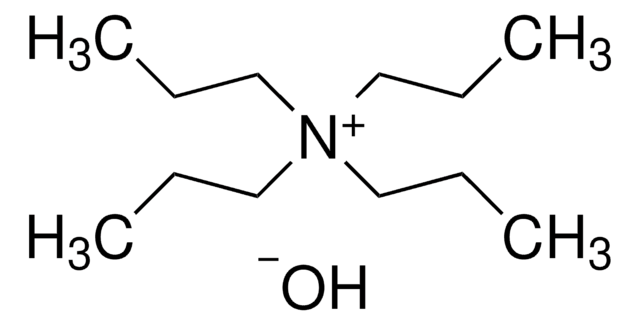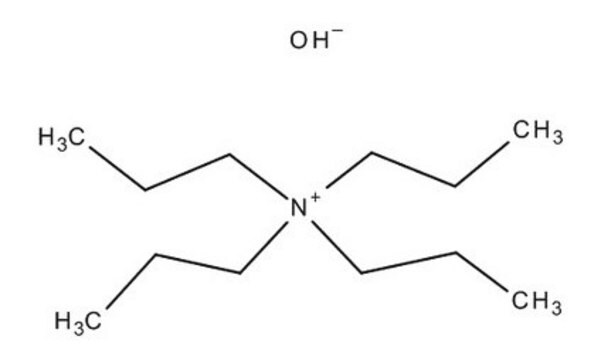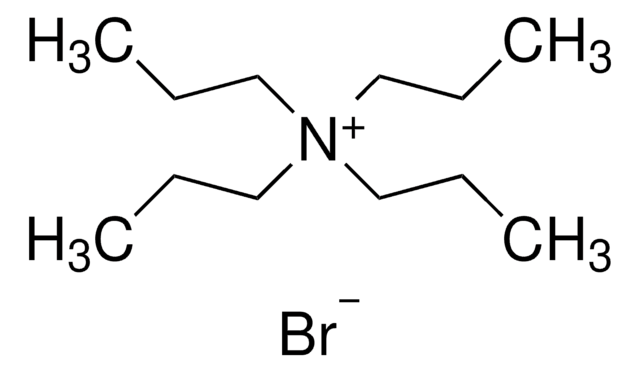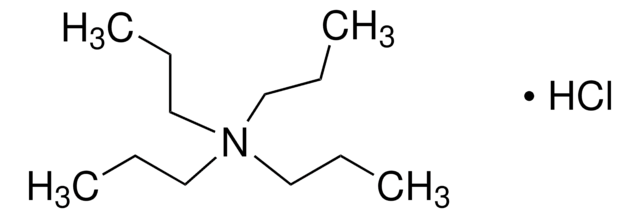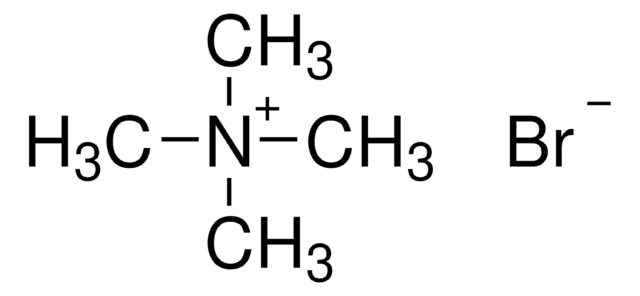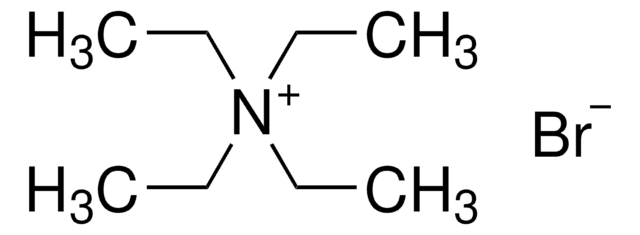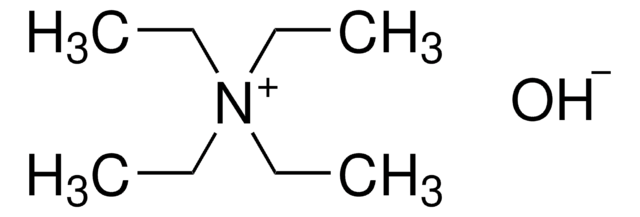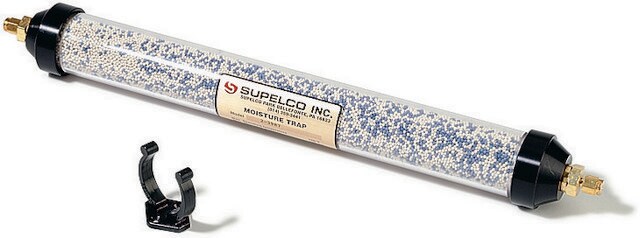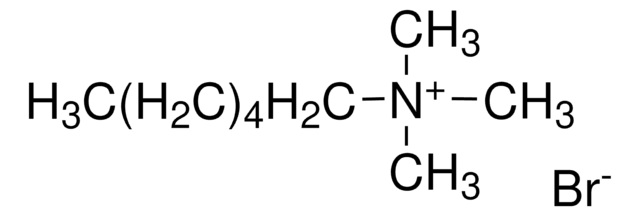Alle Fotos(3)
Wichtige Dokumente
225568
Tetrapropylammoniumbromid
98%
Synonym(e):
N,N,N-Tripropyl-1-propanaminium bromide
Anmeldenzur Ansicht organisationsspezifischer und vertraglich vereinbarter Preise
Alle Fotos(3)
About This Item
Lineare Formel:
(CH3CH2CH2)4N(Br)
CAS-Nummer:
Molekulargewicht:
266.26
Beilstein:
3567846
EG-Nummer:
MDL-Nummer:
UNSPSC-Code:
12352107
PubChem Substanz-ID:
NACRES:
NA.22
Empfohlene Produkte
Qualitätsniveau
Assay
98%
Form
crystals
SMILES String
[Br-].CCC[N+](CCC)(CCC)CCC
InChI
1S/C12H28N.BrH/c1-5-9-13(10-6-2,11-7-3)12-8-4;/h5-12H2,1-4H3;1H/q+1;/p-1
InChIKey
BGQMOFGZRJUORO-UHFFFAOYSA-M
Suchen Sie nach ähnlichen Produkten? Aufrufen Leitfaden zum Produktvergleich
Allgemeine Beschreibung
Tetrapropylammonium bromide (TPAB) is a quaternary ammonium salt. It is commonly used as a phase-transfer catalyst to facilitate charged species transfer between phases during organic synthesis and various chemical reactions. It also exhibits environmental compatibility, operational simplicity, non-corrosiveness, and ease of reusability, rendering it a suitable material for organic synthesis .
Anwendung
Tetrapropylammonium bromide is used as a structure-directing agent in the synthesis of:
- ZSM-5 zeolite, which is a major catalyst in the petroleum and fine chemical industries.
- Microporous and mesoporous materials that have potential applications in electronics (conducting polymers) and catalysis.
Lagerklassenschlüssel
11 - Combustible Solids
WGK
WGK 3
Flammpunkt (°F)
Not applicable
Flammpunkt (°C)
Not applicable
Persönliche Schutzausrüstung
dust mask type N95 (US), Eyeshields, Gloves
Hier finden Sie alle aktuellen Versionen:
Besitzen Sie dieses Produkt bereits?
In der Dokumentenbibliothek finden Sie die Dokumentation zu den Produkten, die Sie kürzlich erworben haben.
Kunden haben sich ebenfalls angesehen
Hui Wang et al.
Physical chemistry chemical physics : PCCP, 17(32), 20636-20646 (2015-07-24)
The (13)C NMR chemical shift moving upfield indicates the main model of π-holeX(-) bond between cyanuric chloride/1,3,5-triazine (3ClN/3N), which possess both the π-hole and σ-hole, and X(-). (13)C NMR and UV absorption titration in acetonitrile confirmed that the bonding abilities
Yong Peng et al.
Angewandte Chemie (International ed. in English), 54(19), 5709-5712 (2015-03-19)
The fabrication of MFI zeolite films with particular b-axis orientation is especially fascinating. Unlike the conventional alkaline or hydrofluoric acid (HF) assisted neutral synthesis route, here we develop a novel neutral synthesis solution system of TPABr/fumed silica/H2 O without the
Sarika Goel et al.
Journal of the American Chemical Society, 136(43), 15280-15290 (2014-10-15)
The encapsulation of metal clusters (Pt, Ru, Rh) within MFI was achieved by exchanging cationic metal precursors into a parent zeolite (BEA, FAU), reducing them with H2 to form metal clusters, and transforming these zeolites into daughter structures of higher
Joel G Davis et al.
The journal of physical chemistry. B, 119(29), 9417-9422 (2014-11-22)
Raman multivariate curve resolution (Raman-MCR), as well as quantum and classical calculations, are used to probe water structural changes in the hydration shells of carboxylic acids and tetraalkyl ammonium ions with various aliphatic chain lengths. The results reveal that water
Peng Bai et al.
Nature communications, 6, 5912-5912 (2015-01-22)
Zeolites play numerous important roles in modern petroleum refineries and have the potential to advance the production of fuels and chemical feedstocks from renewable resources. The performance of a zeolite as separation medium and catalyst depends on its framework structure.
Unser Team von Wissenschaftlern verfügt über Erfahrung in allen Forschungsbereichen einschließlich Life Science, Materialwissenschaften, chemischer Synthese, Chromatographie, Analytik und vielen mehr..
Setzen Sie sich mit dem technischen Dienst in Verbindung.